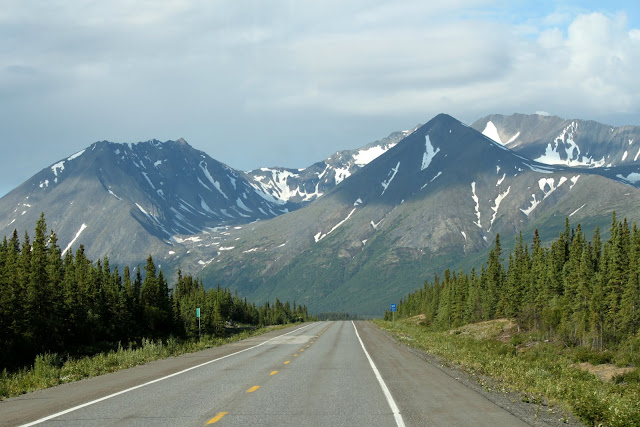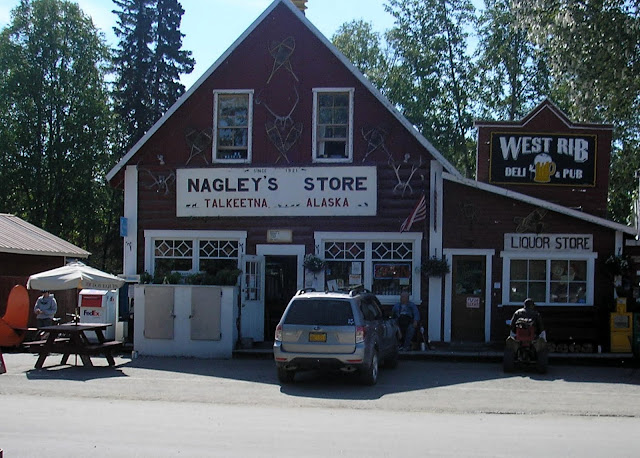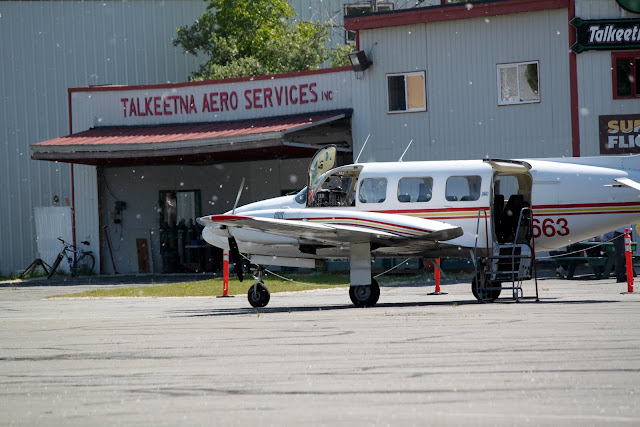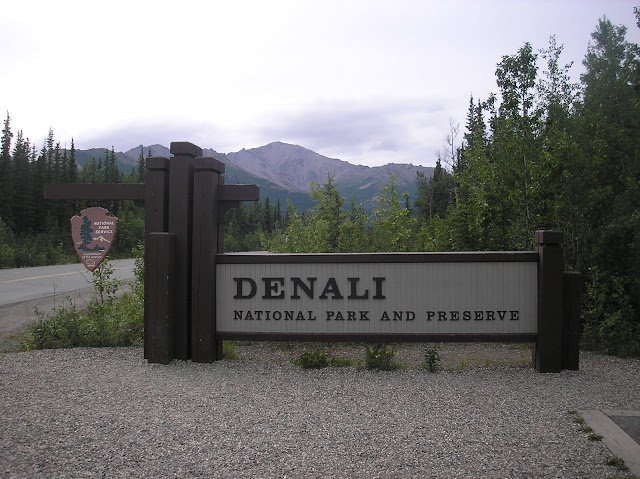Monday June 20: This morning the temperature was 56 degrees and we had a light rain. We drove the short distance to the Denali National Park and stopped at the Visitors Center where we left our jeeps because towed vehicles aren’t permitted at campgrounds within the Park. It took us about 1 ½ muddy hours to travel the 30 miles to the Teklanika Campground. After a quick lunch we boarded one of the park buses for the 2 hour trip to Toklat. We were lucky because by that time the rain had stopped and the animals were moving about. We saw dall sheep, caribou, grizzly bears and fox as well as spectacular views of glaciers, mountains, streams and kettle ponds which are ponds carved out by ancient glaciers and filled by melting glaciers. We met friendly people from all over, and even people from Virginia and North Carolina. After returning to the campground for dinner we attended a “Ranger Talk” on bear behavior, and human and bear encounters.




Tuesday June 21: Today is the longest day of the year and the sun will never set at the Arctic Circle; however, as we’re now south of there, the sun will set for a very short time but it’ll never get dark. Our day started early as we had to get up in time to prepare and catch a park bus departing for Wonder Lake at 6:25 a.m. and with a temperature of only 43 degrees. Wonder Lake is 82 miles into the park and is a very large glacier carved lake which in places is 280 feet deep. We hoped the clouds wood clear so we could view Mount McKinley reflected in Wonder Lake, but that didn’t happen. We did however catch a glimpse of the 20,000+ foot peaks through a hole in the clouds and it was really something worth the trip. The mosquitoes at Wonder Lake were so bad that the bus driver wouldn’t get off the bus. But, we had prepared with long sleeves and mosquito repellant and were determined to eat our lunch at the lake; however, I’m sure we looked funny eating while wearing mosquito head nets. In addition to all the other protective measures I also wore gloves and I didn’t get bitten; Nancy who typically isn’t bothered by mosquitoes received 3 bites on her hands. Today we saw grizzly bears including two momma bears with cubs, a large male grizzly digging a ground squirrel from his borrow for lunch, lots of caribou, some which had very large antlers still in velvet, dall sheep and two foxes.





Wednesday June 22: It rained lightly most of the night before stopping by morning; however, it remained cloudy all day. We slept a little later this morning and Nancy treated me with a great breakfast of bacon and eggs. We took our last Denali bus tour and Ben and Bonnie took the bus to Wonder Lake. Today we saw sheep, caribou, arctic squirrels and moose. Once again because of the clouds we couldn’t get a clear view of Mount McKinley; however, we still had great views and lots of photo ops. While here in Alaska and especially while here at Denali National Park we’ve noticed a lot of non-USA tourists and I speculate that many are taking advantage of the weak US dollar and their favorable currency exchange rate to enjoy Alaska as a bargain. We met a family of 5 from Tunisia who said their flight to LA was 18 hours from where they flew an additional 6 hours to Anchorage.



Thursday June 23: We left the Teklanika Campground about 10 a.m. and returned to the Denali Park Welcome Center where we’ll spend the night. No visit to Denali would be complete without a visit to the Sled Dog Kennels to see the dogs. Sled dogs have always been an integral part of the park and are still used for Winter Patrols today and all the dogs we saw were “working” sled dogs. Later we went to the Denali Village for shopping and dinner. While there we learned that Denali Park and the Village open on May 15 and close on September 15. One shop keeper told us “no one stays here in the winter because with the wind the chill factor is 85 below zero.”



















































